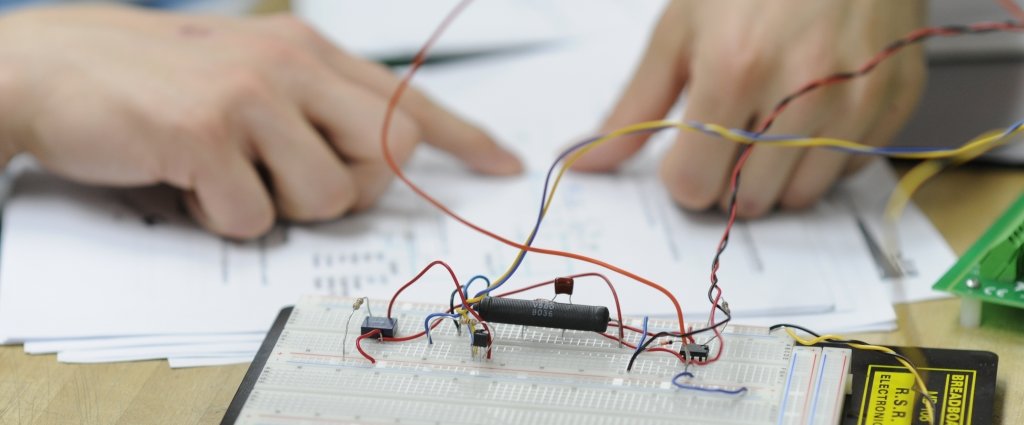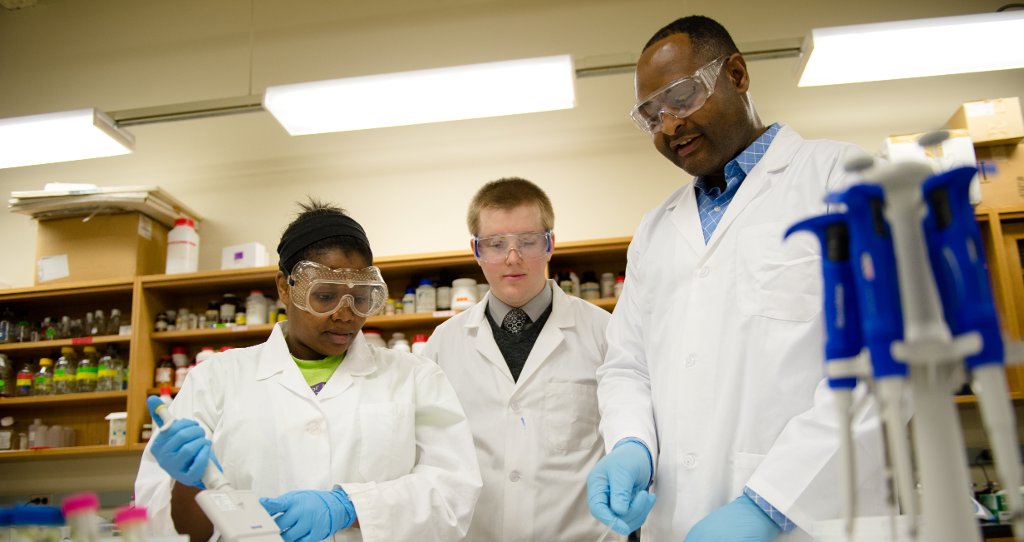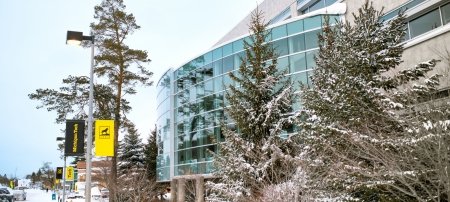The need for four-year highly skilled college graduates prepared to work in science, technology, engineering and math professions is growing. But demand, and the promise of good-paying jobs, isn't enough. Nurturing a STEM workforce takes an ecosystem—interconnected components that attract, mentor, retain and graduate students from diverse backgrounds, including those who face money obstacles.
Michigan Technological University is building on its resources to create a new STEM ecosystem through a nearly $1 million National Science Foundation grant to the School of Technology (SOT). The focus: expand the number and diversity of academically talented and financially disadvantaged students beginning and completing engineering technology degrees at Michigan Tech.
Michigan Tech School of Technology data indicates the median reported salary offer for SOT graduates entering the workforce with a bachelor's degree in 2016-17 was $65,000, with a 95-percent job placement rate.
Scholarships are a first step. The five-year $999,483 Engineering Technology Scholars IMProving Retention and Student Success (ETS-IMPRESS) project will award 12 first-time undergraduate engineering technology students with four-year scholarships and 36 students transferring from community colleges in Michigan and neighboring states with two-year scholarships— $4,500 per student per funded year.
The first round of scholarship applications is open. The deadline is February 28.
More Than the T in STEM
A STEM ecosystem encompasses more than tuition. More than courses, and labs, too. Nasser Alaraje, professor and program chair of the electrical engineering technology program at Michigan Tech, and principal investigator for the project, describes a network of high-impact curricular and co-curricular activities that begin the moment students arrive on campus for orientation. ETS-IMPRESS scholars will focus on the T in technology. But they'll also actively participate in community-building in an overall environment created for student success.
"By combining the strong technical programs in the School of Technology with the programs of the Pavlis Honors College and S-STEM co-curricular activities, the project will develop students who are not only well trained in their discipline, but have a wide range of experiences that will help them be competitive job seekers," Alaraje says.
"These activities include mentoring by School of Technology faculty and industry partners, advising support, enrollment in courses focused on achieving personal and academic goals, and encouragement to participate in research and internship opportunities," he says. "Students will have the opportunity to graduate with two great benefits: a bachelor's degree in the School of Technology and Honors from the Pavlis Honors College learning community."
The multi-layered approach brings together SOT engineering technology programs with programs available through Michigan Tech's Pavlis Honors College, where honors programs are based on real-world experiences through individual learning pathways: global leadership, community engagement, enhanced enterprise, research scholars, new ventures or custom.

"This program represents a unique partnership between the honors college and the School of Technology to explore the most effective ways to produce graduates who are ready to manage the unique and demanding challenges of the 21st century STEM workforce."
"ETS-IMPRESS scholars will design their own educational programs that deliberately engage them in enhancing their educational experience and complementing their engineering technology major with leadership education and co-curricular activities that prepare students for future success," says Alaraje. "These skills, valued by employers, are important for students to develop to enhance their competitiveness for jobs in industry."
Recruit and Retain the Underrepresented in STEM
The project aims to expand the number and diversity of people entering the engineering technology STEM pipeline, including underrepresented groups: women, first-generation college students, returning veterans and minority populations. It also aims to reduce time to graduation.
The American Association of Community Colleges reports that about 50 percent of all U.S. undergraduates are educated at a community college.
"Funding for this project helps Michigan Tech contribute to meeting regional and national needs for a larger and more diverse STEM technology workforce," Alaraje says.
STEM Jobs and Education by the Numbers
"The availability of a well-trained STEM workforce can do much to power the state’s return to economic vitality," says Alaraje. Numbers from a 2015 study by the State of Michigan Bureau of Labor Market and Strategic Initiatives illustrate both challenges and how Michigan Tech can contribute to solutions:
- STEM employment has increased 2.8 percent since 2010.
- STEM job opportunity is expected to grow by 11.8 percent through 2020, outperforming the expected 8.5-percent increase in other occupations.
- Of four million total jobs in Michigan in 2013, 286,200 were STEM jobs, representing 7.2-percent of total employment.
- By 2020, one in five new jobs in the state will be in STEM.
- 67 percent of job ads mention soft skills as a requirement for open STEM vacancies in Michigan. Alaraje says the industrial advisory board who assists the SOT at Michigan Tech echoes the emphasis on qualities like being able to listen, communicate and work on teams.
Quality Education Equals Quality of Life
The same STEM ecosystem that enables more talented, diverse students to earn four-year engineering technology degrees fulfills industry need, but also provides fulfilling, family-sustaining careers—the kind that move people from poverty to prosperity. Michigan Tech is currently ranked 10th among 369 selective public colleges for the "chance a poor student has to become a rich adult," in a New York Times college mobility report.
The ETS-IMPRESS project can also provide models for future programs. It will gauge the effectiveness of an inclusive honors college curriculum and support structure on student motivation, performance, retention, intentions to persist and professional skill development, says Alaraje.
It will also compare performance, retention and time to graduation between ETS-IMPRESS students and students who transfer to Michigan Tech engineering programs from two-year institutions, but choose not to enroll in Pavlis Honors College.
"This grant allows the School of Technology to provide a unique opportunity to engage academically talented engineering technology students in activities designed to foster leadership, technical know-how, and employability skills for technology fields that actively recruit and employ graduates from diverse backgrounds and communities, with a goal to increase student retention and graduation."
Michigan Technological University is an R1 public research university founded in 1885 in Houghton, and is home to nearly 7,500 students from more than 60 countries around the world. Consistently ranked among the best universities in the country for return on investment, Michigan's flagship technological university offers more than 120 undergraduate and graduate degree programs in science and technology, engineering, computing, forestry, business, health professions, humanities, mathematics, social sciences, and the arts. The rural campus is situated just miles from Lake Superior in Michigan's Upper Peninsula, offering year-round opportunities for outdoor adventure.






Comments